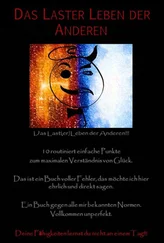Seeckt’s response was to develop an army capable of “fighting outnumbered and winning.” Among the most common misinterpretations of his work is that it was intended to provide cadres for a future national mobilization. Almost from the beginning the Reichswehr developed plans for eventual expansion. These plans, however, were based on enlarging and enhancing the existing force, not submerging it in an army prepared to fight the Great War over again. The manuals issued in the early 1920s, in particular the 1921 field service regulations titled Fuehrung und Gefecht der Verbundeten Waffen (Leadership and Employment of Combined Arms) emphasized the importance of the offensive. The Reichswehr, Seeckt insisted, must dictate the conditions of battle by taking the initiative. It was on the offensive that the superiority of troops and commanders achieved the greatest relative effect. The leader’s responsibility was above all to maintain pace and tempo. He must make decisions with minimal information. Boldness was his first rule; flexibility his second. Doctrine and training alike emphasized encounter battles: two forces meeting unexpectedly and engaging in what amounted to a melee—a melee in which training and flexibility had a chance to compensate for numerical and material inferiority. Even large-scale attacks were envisaged as a series of local combats involving companies, squads and platoons finding weak spots, creating opportunities, cooperating ad hoc to exploit success.
General-audience writings like Friedrich von Taysen’s 1921 essay on mobile war also stressed what was rapidly becoming a new—or rediscovered—orthodoxy. Machines, Taysen declared, were useless unless animated by human energy and will, when they could contribute to the rapid flanking and enveloping maneuvers that alone promised decision in war. Two years later he restated the importance of fighting spirit and warned against allowing infantry to become addicted to armor support.
Taysen’s soaring perorations on “Germanic limitlessness” and “living will” were a far cry from Seeckt’s practical approach. They nevertheless shared a common subtext: the centrality of mobility in both the figurative and the literal senses. The Reichswehr had to be able to think faster and move faster than its enemies at every stage and in every phase. Paradoxically, the banning of cutting-edge technology facilitated cultivating those qualities by removing the temptations of materially focused faddism. Elsewhere in Europe, J. F. C. Fuller and B. H. Liddell-Hart depicted fully mechanized armies with no more regard for terrain than warships had for the oceans they traversed. Giulio Douhet and Hugh Trenchard predicted future wars decided by fleets of bombers. French generals prepared for the “managed battle” structured by firepower and controlled by radio. The Red Army shifted from an initial emphasis on proletarian morale to a focus on synergy between mechanization and mass as ideologically appropriate for a revolutionary state.
In sober reality, not until the end of the 1920s would the technology of the internal combustion engine develop the qualities of speed and reliability beyond the embryonic stages that restricted armored vehicles to a supporting role. Aircraft as well were limited in their direct, sustained contributions to a ground offensive. Wire-and-strut, fabric-covered planes with fragile engines, even the specialized ground-attack versions developed by the Germans, were terribly vulnerable to even random ground fire. Artillery, despite the sophisticated fire-control methods of 1918, was a weapon of mass destruction. In that context the Reichswehr cultivated its garden, emphasizing human skills—a pattern facilitated because much of the process of maintaining effectiveness involved preventing long-service personnel from stagnating as a consequence of too many years spent doing the same things in the same places with the same people.
The cavalry in particular emerged from its wartime shell. The treaty-prescribed order of battle gave it an enhanced role faute de mieux. The mounted arm was forced to take itself seriously in the tasks of securing German frontiers and preserving German sovereignty. Further incentive was provided by tables of organization, internal organizations that authorized one cavalry officer for two of his infantry counterparts. There were fewer opportunities to withdraw into nostalgic isolation—everyone had to pull his professional weight. As early as spring 1919, a series of articles in Militär-Wochenblatt , the army’s leading professional journal, dealt with the army’s projected reconstruction and included two articles on cavalry. Maximilian von Poseck, the arm’s Inspector-General, argued that in the east, large mounted units had been effective for both reconnaissance and combat, and mobile war was likely to be more typical of future conflict than the high-tech stalemate of the Western Front.
The Reichswehr’s cavalry cannot be described as taking an enthusiastic lead in Germany’s military mechanization. Its regimental officers initially included a high percentage of men who had spent their active service in staffs or on dismounted service, and who were now anxious to get back to “real cavalry soldiering.” In the early 1920s Seeckt consistently and scathingly criticized the mounted arm’s tactical sluggishness, its poor horsemanship, and its inaccurate shooting, both dismounted and on horseback. Too much training was devoted to riding in formation—a skill worse than useless in the field, where dispersion was required. Horses did not immediately become “battle taxis.” Lances were not abolished until 1927—a year earlier, let it be noted, than in Britain. Neither, however, did the cavalry drag its collective feet, or pursue horse-powered dead ends with the energy of their European and American counterparts. After 1928, through judicious juggling of internal resources, each Reichswehr cavalry regiment included a “Special Equipment Squadron” with eight heavy machine guns and, eventually, two light mortars and two light cannon—a significant buildup of firepower, achieved without doing more than slightly bending treaty requirements.
The cavalry also benefited from the absence of institutional rivals. There was no air force to attract forward thinkers and free spirits. Germany had no tank corps, no embryonic armored force, to challenge the horse soldiers’ position and encourage the narrow branch-of-service loyalties that absorbed so much energy on the mechanization question in France, Britain, and the United States. Instead, German cavalrymen were likely to find motor vehicles appealing precisely because they were deprived of them.
German and German-language military literature of the 1920s projected the development of a genuine combined arms formation. While details varied, the core would be three horse-mounted brigades—a total of six regiments, each with a machine-gun squadron. These would cooperate with an infantry battalion carried in trucks, a cyclist battalion, and an independent machine-gun battalion, also motorized. Fire support would be provided by a battalion each of horse-drawn and motorized artillery. With a detachment of around a dozen armored cars, a twelve-plane observation squadron, an antiaircraft battalion, an engineer battalion, and signal, medical, and supply services, this theoretical formation combined mobility, firepower, and sustainability to a greater degree than any of its forerunners or counterparts anywhere in Europe.
In the delaying missions that were generally recognized as probable in a future war’s initial stages, the division could keep an enemy off balance by its flexibility, with its brigades controlling combinations of other units in the pattern of the combat commands of a US armored division in World War II. Offensively the division could operate independently on an enemy’s flank, and behind the kind of rigid front line projected throughout Europe by French- influenced doctrines, disrupting movement by hit-and-run strikes or, in more favorable circumstances, developing and exploiting opportunities for deeper penetration.
Читать дальше
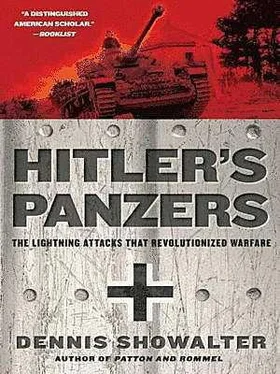
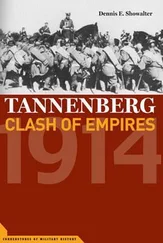
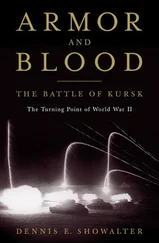

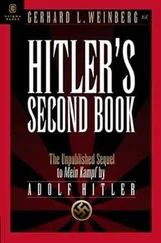


![Traudl Junge - Hitler's Last Secretary - A Firsthand Account of Life with Hitler [aka Until the Final Hour]](/books/416681/traudl-junge-hitler-s-last-secretary-a-firsthand-thumb.webp)
